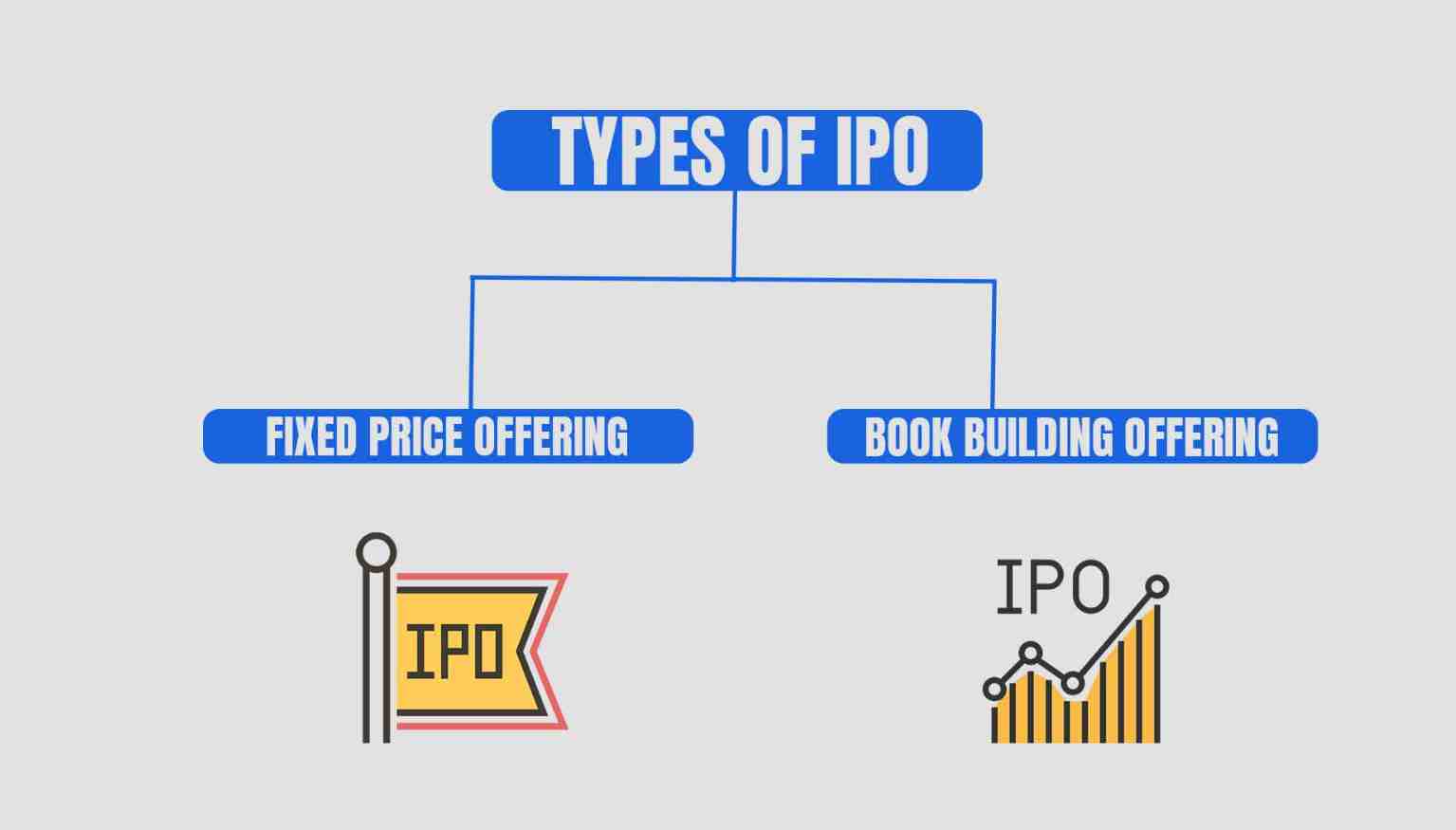- Umang Sagar
- Economy, Recent article
IPO (Initial Public Offer)

What Is IPO?
An IPO stands for the Initial Public Offer which means the private company issued shares in the primary market for the public or investors to invest in their company. The private company thus turns into a public company by doing so and gets itself listed on the stock exchange. The capital market comprises two markets namely primary and secondary. The primary market is the one that is used by the issuers where new securities are issued in the form of the initial public offer, right issue, private placement, or a further public offer. The secondary market is the one where the stocks of the existing companies are exchanged on the stock market at prevailing market rates.
The IPO invites the public to invest in the growth and decision-making process of a company. The IPO is an important means to have access to the funds for the growth and expansion of the company. IPOs also increase the credibility of the company. A continuous issue of several IPOs can be stated as a growth of the economy.
IPO - An Overview

Before the issue of an IPO, a company is stated as a private company. As a private company, it has its investors as founders, family, and friends, and as the company grows professional investors such as angel investors and venture capitalists also invest. The company may also have funds in the form of loans and borrowings.
At a certain stage the company may need more funds for growth and expansion When the company introduces its IPO to the public, a relationship is created directly between the company and the investors, and the funds flow to the Company as its “Share Capital”. Investors thus become shareholders and thus become owners of the Company with their participation in the Company’s IPO and enjoy ownership rights over the company. IPO is the largest source of funds for any company, that capacitance the company to create “Fixed Assets” which will be employed during the business. The shareholders of the Company are free to exit their investment at any time through the secondary market. The investors consist of any individuals or institutional investors who are interested in investing in the shares of the company.
When a company goes from private to public, the previously owned private share ownership converts into public ownership, and the shares of the existing private shareholders become worth the public trading price. Generally, the conversion from private to public is a key time for private investors to cash in and earn the returns they had expected on the investment. Private shareholders may also hold onto their shares in the public market or sell a portion or all of them in the secondary market for gains.
History Of IPO
The term initial public offering (IPO) has been a fuzz word on Wall Street and among investors for decades. The Dutch are being credited for conducting the first modern IPO by offering shares for subscription for investment in the Dutch East India Company to the general public.
Since then, IPOs have been used as a source for companies to raise capital from public investors through the issuance of public share ownership that promotes growth and development along with the expansion of the company.
For many years, IPOs have been known for uptrends and downtrends in issuance. Individual sectors also undergo uptrends and downtrends in issuance due to innovation and various other economic factors. Tech IPOs are seen to be multiplied at the height of the dot-com boom as startups in spite of being without revenues rushed to list themselves on the stock market.
Process Of IPO

An IPO extensively consists of two parts. The first is the pre-marketing phase of the public offering and the second is the initial public offering itself. When a company is engaged in an IPO, it will advertise to underwriters by seeking private bids or it can also make a public statement to generate interest.
The underwriters are the pilots of the IPO process and are chosen by the company. A company may appoint one or several underwriters to the management of different parts of the IPO process collaboratively. The underwriters incorporate themselves in every aspect of the IPO namely due diligence, document preparation, filing, marketing, and issuance.
Steps:-
1. Proposals
- Underwriters present their proposals and valuations along with the services they’ll provide, the best type of security to issue, the offering price, the number of shares, and the estimated time frame for the market offering.
2. Appointment of Underwriter
- The company selects its underwriters that seem to deem fit and formally agrees to underwrite terms through an underwriting agreement.
3. Team formation
- IPO teams are made before actually issuing the IPO that including the underwriters, lawyers, certified public accountants (CPAs), and Securities and Exchange Commission (SEC) experts.
4. Documentation
Information regarding the company is accumulated for required IPO documentation. The S-1 Registration Statement is the first or primary IPO filing document. It has two segments:
The prospectus and the privately held filing information.
- The S-1 includes preliminary information about the expected date of the filing.
- This will be revised often throughout the pre-IPO process. The included prospectus is also to be revised continuously.
5. Marketing & Updates
Marketing materials are created for the publicity of the new stock issuance. Underwriters and executives market the share issuance to estimate demand and establish a final offering price. Underwriters can do the revision to their financial analysis throughout the marketing process. This can be changing of the IPO price or issuance date as they see fit.
Companies take all the required steps to meet specific public share offering requirements. Companies must adhere to both exchange listing requirements as well as SEC requirements for public companies.
6. Board of Directors & Processes
- To form a board of directors and confirm processes for reporting auditable financial and accounting information every quarter.
7. Shares to be Issued
- The company issues the shares on an IPO date. Capital from the first or primary issuance to shareholders is received as cash and recorded as stockholders’ equity on the balance sheet. As a result, the balance sheet share value extensively depends on the company’s stockholders’ equity per share valuation.
8. Post-IPO
- Some post-IPO provisions must be commenced. Underwriters may be given a specified time frame to buy an additional number of shares after the initial public offering (IPO) date.
Types Of IPO

1. Fixed Price Issue:-
Under the fixed price issue, the company must set a fixed price at which all its shares will be offered to the investors for purchase. For making this happen, a company hires a merchant banker, an entity that will be appraising and reducing the level of risk for a company.
The merchant banker’s role is to find out the total current value of a company along with its future prospectus. Apart from this, they also make a risk overview of all the investments and how they would reimburse the investors when they will face such an enormous risk.
After studying and going through subsequent research, they determine the price of a particular share that must be fixed to raise considerable capital for their company.
In this type of IPO, all investors know the price of a particular share offered for subscription by the company before the company enters public. They pay the total fixed price at the time of subscribing to the IPO of a specific company.
2. Book Building Issue:-
In the book building issue, the price is declared during the process of IPO. The company does not set any fixed price in this process, but there are two different price bands namely “floor price” and “cap price.” The “floor price” is the lowest price band and the “cap price” is the highest price band. However, investors who are interested in buying the shares must make a bid within a demanding time before the company sets the price.
The bidding is usually done within the range of 20% set by the company or within a price band. The company is also required to clarify the number of shares they wish to sell to the investors.
In the end, the final price depends completely on the bids the company obtains from the investors.

- The differences between both the pricing are due to the following factors:-
1. Pricing of shares
- In a fixed price issue, the price of the share is not previously set but it is fixed on the first day of its listing, and later, the price that is fixed per issue is printed in the order document. Whereas in a book building issue, the price is not specified in advance, and only the pricing band is fixed initially but the exact share price is decided only after the closing date of the bid.
2. Demand of shares
- In a fixed price issue, the demand is known only after the closing of the issue i.e., in the end. Whereas, in a book building issue, the demand can be known every day i.e., constantly during the bid.
3. Payment for share price
- In a fixed price issue, investors will be paying 100% advance payment of the share price at the time of bidding for a share. Whereas, in a book building issue, the payment is made after the process of the allotment of the shares.
4. Reservations if share subscribers
- In a fixed price issue, 50% of the allocations are reserved for those who have investments below two lakhs, and the rest 50% is given for high amount investors.
Whereas, in a book bidding issue, 35% of the allocations are reserved for Qualified Institutional Buyer (QIB), 35% are reserved for small investors, and the rest are reserved for the other categories of the investors for the subscription.
Advantages

1. Fundraising
- The most often recognized advantage of an initial public offering is money. The proceeds from an IPO provide ample of investment opportunities available because of the new capital. This capital or fund can benefit a growing company in numerous ways. Companies may use the funds from initial public offering to finance research and development, hire new employees, build buildings, reduce debt, fund capital expenditure, acquire new technology or other companies, or to finance any number of other possibilities. The money provided by an IPO is noteworthy and can transform the growth direction of a company.
2. Exit Opportunity
- Every company has stakeholders who have contributed subsequent amounts of time, money, and resources with the hopes of creating a successful company. These founders and investors often go for years without seeing any notable financial return on their investment. An initial public offering is a considerable exit opportunity for stakeholders, whereby they can potentially receive massive amounts of money, or, at the very least, liquefy the capital or funds they currently have invested in the company.
3. Publicity And Credibility
- If a company desires to continue to grow, it will require increased exposure to potential customers who know about and trust its products; an IPO can provide this exposure as it plunged a company into the public spotlight. Publicity is done by analysts around the world who report on every initial public offering to help the investors know whether to invest, and many news agencies bring attention to different companies that are going public. The companies not only receive a great deal of attention when they decide to go public, but they also receive credibility.
4. Reduced Overall Cost of Capital
- The major obstacle for any company is its cost of capital. Before an IPO, companies generally must pay higher interest rates to receive loans from banks or give up ownership to receive funds from investors. An IPO can reduce the difficulty of receiving additional capital particularly. Before a company can even begin its formal IPO preparation process, it must be audited as per the PCAOB3 standards; this audit is actually more scrutinizing than any prior audits and fosters greater confidence that what a company is reporting is accurate. This increased assurance will be resulting in lower interest rates on loans received from banks. Other than the lower interest rates, once a company is public, it can even raise additional capital through subsequent offerings on the stock exchange, which is generally easier than raising capital through a private funding round.
5. Stock As a Means of Payment
- Acquisition of other companies is normally very expensive. When a company is public, it is having the option to issue shares of its stock as a means of payment, instead of using millions of dollars of cash.
Disadvantages
1. Additional Regulatory Requirements and Disclosures
Public companies are required to submit their financial statements to the Securities and Exchange Commission (SEC) every year. The financial statements must be prepared in the accordance with the United States Generally Accepted Accounting Principles and must be audited by a certified public accounting firm. This is costly for public companies every year and requires thousands of labor hours.
2. Market Pressures
Market pressures are very difficult for company leaders who are used to doing what they feel is best for the company. Founders tend to have a far-sighted vision as to what their company will look like years from the present and how it will impact the world. Whereas the stock market has a very short-term, profit-driven view. Even if the leaders are doing what is best for the company in the long run but failing to meet the short-term goals may cause the company to lose value and the leadership might be replaced as a result.
3. Potential Loss of Control
One of the major disadvantages of an IPO is that founders may lose control of their company. Though there are ways to ensure founders retain most of the decision-making power in the company, once a company is public, it is inevitable to keep the public happy, even if other shareholders do not have voting power.
4. Transaction Costs
Initial public offerings are quite expensive. The major cost of a public offering is the underwriter’s fees. On top of underwriter fees, companies must spend on legal fees, auditor fees, registration, and printing fees. The transaction costs will be even higher in case a company hires a financial reporting advisor or other specialty groups.
Top 13 Movies Related To The Stock Market
- Guru
- Scam 1992
- Baazar
- Gafla
- Corporate
- The Big Bull
- Share Bazaar
- The Big Short
- Billions
- Wall Street
- Inside Job
- Margin Call
- The Wolf of Wall Street
Top 13 Interesting Facts About IPO
IPO promotes fundraising.
IPO gives an exit opportunity to the founders and stakeholders.
Publicity And Credibility increase through IPO.
Overall Cost of Capital is reduced through IPO.
Stock can be used as a means of payment.
IPO is an inexpensive mode of raising funds compared to other means.
Additional regulatory requirements and disclosures are to be done.
Market pressure is experienced by the leaders.
Potential loss of control in the hands of the promoters.
Transaction costs are to be borne for an IPO to be released.
IPO is the primary market for raising capital.
IPO is a means for investment at the seed and growth stages.
The release of IPOs in the market is a sign of a growing economy.




